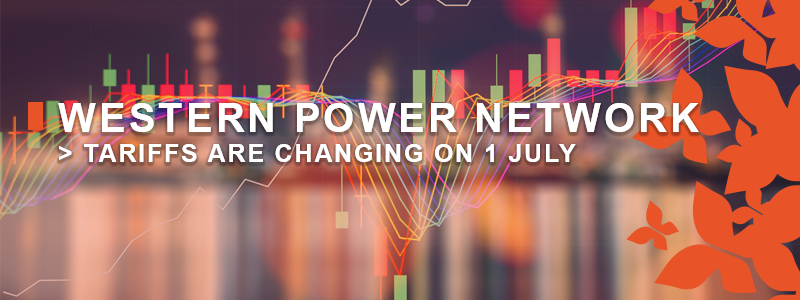- Network tariffs make up between 30-50% of an electricity bill
- The Economic Regulation Authority gave final approval to Western Power’s new tariffs on 28 February 2019
- Existing tariffs are increasing 5-8%
- For the first time since deregulation, new tariffs have been created and the structure of some existing tariffs has been changed
- Change Energy will analyse the new tariffs to ensure the lowest possible cost for our customers – expect changes on bills in August for July consumption.
Background
Access to Western Power’s network is regulated by the Access Arrangement that must be approved by the ERA. The Access Arrangement governs how customers can access the grid, what services Western Power must provide, Western Powers’ operating and capital expenditures and the tariffs that are charged for that access.
Retailers, like Change Energy, contract with Western Power to access the network in order to supply customers. Retailers pay Western Power the access charges for each customer they supply. These costs are either included in the rates paid by customers (bundled rates) or are passed through to the customer on the bill (unbundled rates).
Western Power has a number of different tariffs for business customers depending both on the amount of electricity used and how it is used. The following is a summary of the tariffs available to small to medium business.
What does this mean for customers?
Change Energy will analyse the last 12 months of consumption for each of our customers to ensure that they are on the lowest cost tariff – taking into account the new rates and new tariffs. For the existing tariffs, the rates have increased between 3-8%, however increases in the daily supply charges and changes to the tariff structure may mean the overall increase is more or less than the percentage increases. Some customers may suit the new tariffs which may limit the increase as well.
We will be including a letter explaining how the Western Power tariff changes will effect your bill, along with any adjustment on the July 2019 bill – issued in August.
Existing Tariffs
If you are an unbundled customer, you will see one of the following tariffs on your monthly bill.
RT2 – Anytime Energy Business Service – this tariff is comprised of a fixed daily charge and an anytime energy rate – it is usually suitable for businesses that operate 9-5 Monday to Friday with minimal off-peak and weekend usage.
RT4 – Time of Use Energy Service – this tariff has a daily supply charge and a rate for peak (8am to 10pm Monday to Friday) and a rate for off-peak (all other times including weekends). This tariff is better for businesses that are open longer and use more electricity in the evening and weekend.
RT6 – Metered Demand Service – this tariff is based on demand rather than consumption like the RT2 and RT4 tariff. It is designed for customers that have a steadier load throughout day and week – it is better suited for customers with constant refrigeration or processing loads. It is based the 12-month peak demand of the load, meaning that if consumption decreases, this tariff will not decrease. The peak/off-peak time period for the RT6 have been changed so that the Peak period is 3pm – 9pm Monday to Friday, with off-peak all other times including weekends and public holidays. The inclusion of public holidays is new and only applies to the RT6 and the newly created tariffs below.
New Tariffs
Western Power is offering three new business tariffs that take into account the changing nature of consumption on the grid – with less consumption during mid-day due to solar, but with peaks in the morning and especially in the evening.
RT18 – 3 Part Time of Use Tariff – this tariff has a daily supply charge, a rate for peak (3pm to 9pm Monday to Friday), Shoulder (12pm to 3pm Monday to Friday) and off-peak (all other times, including public holidays). Change Energy’s analysis shows that this tariff will typically benefit customers with 5-6 day operations, but that start early in the day and finish between 3 and 4pm, thereby missing most of the high peak period rates.
RT20 – 3 Part Time of Use Demand Tariff – this is the most complicated of the tariffs; it has a demand component, similar to the RT6 tariff as well as a consumption component similar to the RT18 3 Part Time of Use Tariff. The demand component is set monthly and only during the peak period (3pm to 9pm Monday to Friday). Our analysis shows that this tariff will suit customers that do not have significant air conditioning loads and can avoid large spikes in consumption during the peak period.
RT22 – Multi-Part Time of Use Tariff – this tariff is comprised of 5 different time periods but works out to a similar but higher cost than the RT18 tariff as the shoulder period is longer (7am to 3pm Monday to Friday). In addition to peak, off-peak and shoulder, there is an overnight period (11pm-4am Monday to Friday) and a super off-peak period (11pm-4am weekends and public holidays). However, the rates charged for off-peak, overnight and super off-peak are the same.
Want to know more? Please contact geoff.gaston@changeenergy.com.au with any questions.

